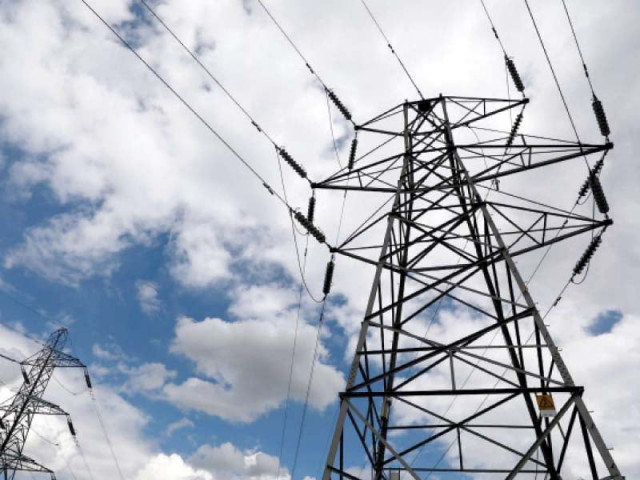Lessons from Turkey: Pakistan’s power sector reforms
Turkish experience provides insights into process of opening markets to competition

Pakistan embarked upon a series of reforms in the power sector in the 1990s, more or less around the same time as Turkey.
In Pakistan, these reforms started with the unbundling of state-owned distribution companies (DISCOs). This was supposed to culminate with their privatisation and then evolve further with the creation of a competitive market, which - ideally - would have resulted in multiple options for the end-user, leading to cheaper power and improved services, among other benefits.
KESC was the first DISCO to be privatised and later became K-Electric. It was termed a success by many, but it also had, and still has, its fair share of detractors. Regardless, for a number of reasons, mostly political, the process of reforms stuttered and eventually fizzled out.
While the country went from a huge power deficit position to a power surplus, much of that power is of no use to almost a third of the population because the reforms failed to creative an attractive environment for investment in the transmission and distribution (T&D) system. In Turkey, reforms also started in the 1990s and led to the privatisation of distribution retail companies in the early 2010s.
The enactment of the Electricity Market Act in 2001 was a turning point towards a more competitive market environment and was a key factor in the success of this process and the country’s electricity market saw a dramatic restructuring during the last 20 years.
There was a radical transition from a vertically integrated public monopoly model to a model of regulated competition with privatised and unbundled firms. Each of the distribution companies together with the affiliated last-resort suppliers was privatised, distribution activities and retail sale operations were unbundled, and the supply market was gradually opened to competition.
As of 2017, consumers with annual consumption of at least 2,400 kWh of electricity were free to choose their suppliers. The number of eligible consumers as of March 2017 was about 3.5 million, a substantial majority of which (2.2 million) was residential consumers.
Whenever the topic of power sector reforms comes up, the most widely proposed solution to transform vertically integrated electricity markets into competition-based markets is unbundling, in which retail services and distribution activities are vertically separated. Distribution/retail unbundling is considered to be the most essential element of retail competition in which consumers are free to choose their suppliers.
However, the Turkish experience suggests that vertical separation of the electricity supply industry, while necessary, was not enough to ensure the success of competitive electricity supply markets.
Legal unbundling, which corresponds to the execution of supply and distribution activities under different legal entities and is the most generic form of unbundling, does not fully eliminate the incentive of the distribution company to provide favourable treatment to its affiliated supply companies. This risk of preferential treatment to affiliated companies still remains and the European Commission argues that even after unbundling, network operators and affiliated supply companies have both the incentive and the ability to obstruct entry and competition in the electricity supply market.
This was evident in the Turkish model as well and the transformation of the electricity industry in Turkey was seen to have led to conflicting consequences for the market structure. Even after two decades of reforms, many last-resort suppliers continued to have near-monopoly positions in their franchised regions.
Some experts suggest that this could be because of problems with the development of retail competition in Turkish electricity markets.
However, part of the problem was also attributed to many other factors such as cross-subsidised tariffs, regulated rates below market prices, low levels of customer awareness and public involvement in the electricity market for political purposes.
Similarly, a major obstacle to the complete success of the Turkish model was insufficient vertical unbundling of supply and distribution.
While regulatory reform seems complete in Turkey, in terms of unbundling, tariff policies and the institutionalisation of regulatory processes, competition policy issues have begun to surface and political interference has become more prevalent. As a result, a new wave of investigations was initiated by the Turkish Competition Authority in the second half of 2016. There are lessons to be learnt here for Pakistan, as we embark on a fresh initiative of power sector reforms.
Overall, the Turkish model has led to remarkable results because of a variety of interlinked measures. These measures included legislation regarding electricity, gas, renewable energy, and energy efficiency; the establishment of an independent energy sector regulatory authority; energy price reform; the creation of a functional electricity market and large-scale introduction of natural gas.
These measures also included the restructuring of state-owned energy enterprises and large-scale private sector participation through privatisation and new investment. As a result, an electricity market with over 800 participants has been developed, and from 2001 to 2014 over 30,000 megawatts of market-based, private-sector power generation capacity was commissioned.
Along with this, investors took over the entire power distribution system between 2008 and 2013.
Successive governments, public institutions and state-owned energy companies, and investors and financiers were ready to put the framework and structures to work. They were ready and able to take the risks: political risks, operational risks, financial risks.
Such risk-taking made Turkey’s energy reform possible. The legal and regulatory framework and industry and market structures evolved over time, step by step. Energy prices were adjusted at a pace considered acceptable to consumers.
In this respect as well, the Turkish experience provides additional insights into issues surrounding the process of opening markets to competition- insights that we can replicate in Pakistan. We will have to find our own way forward, but we can learn from Turkey’s experience - both from its past reform milestones and its current reform challenges.
The writer has an MSc in Sustainability and Environment Management from the University of York and currently works in the energy sector
Published in The Express Tribune, October 14th, 2020.
Like Business on Facebook, follow @TribuneBiz on Twitter to stay informed and join in the conversation.



















COMMENTS
Comments are moderated and generally will be posted if they are on-topic and not abusive.
For more information, please see our Comments FAQ